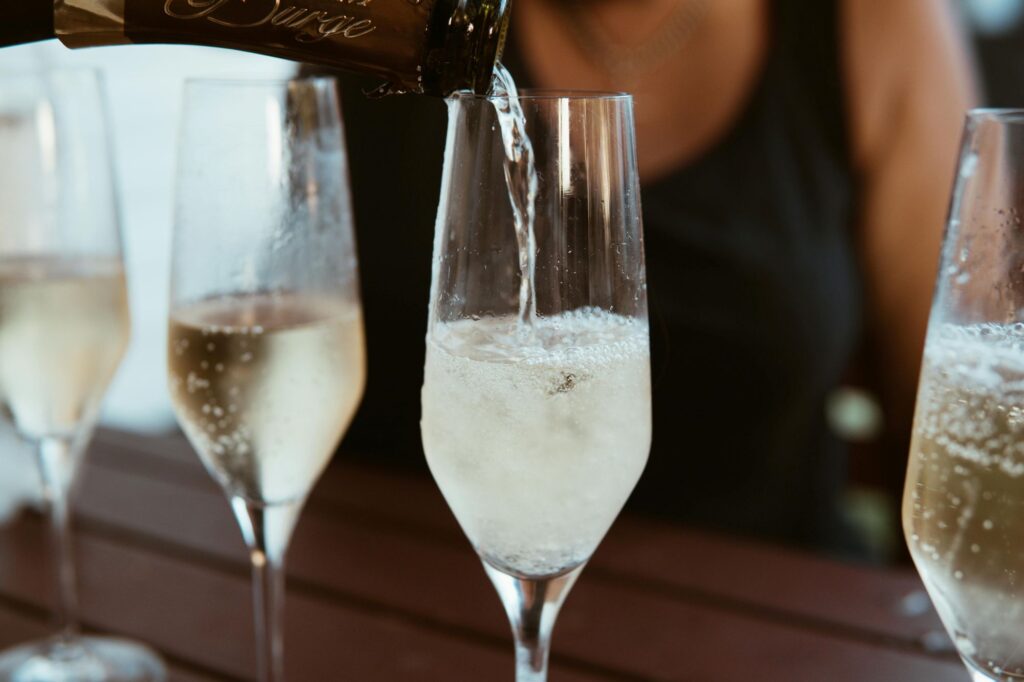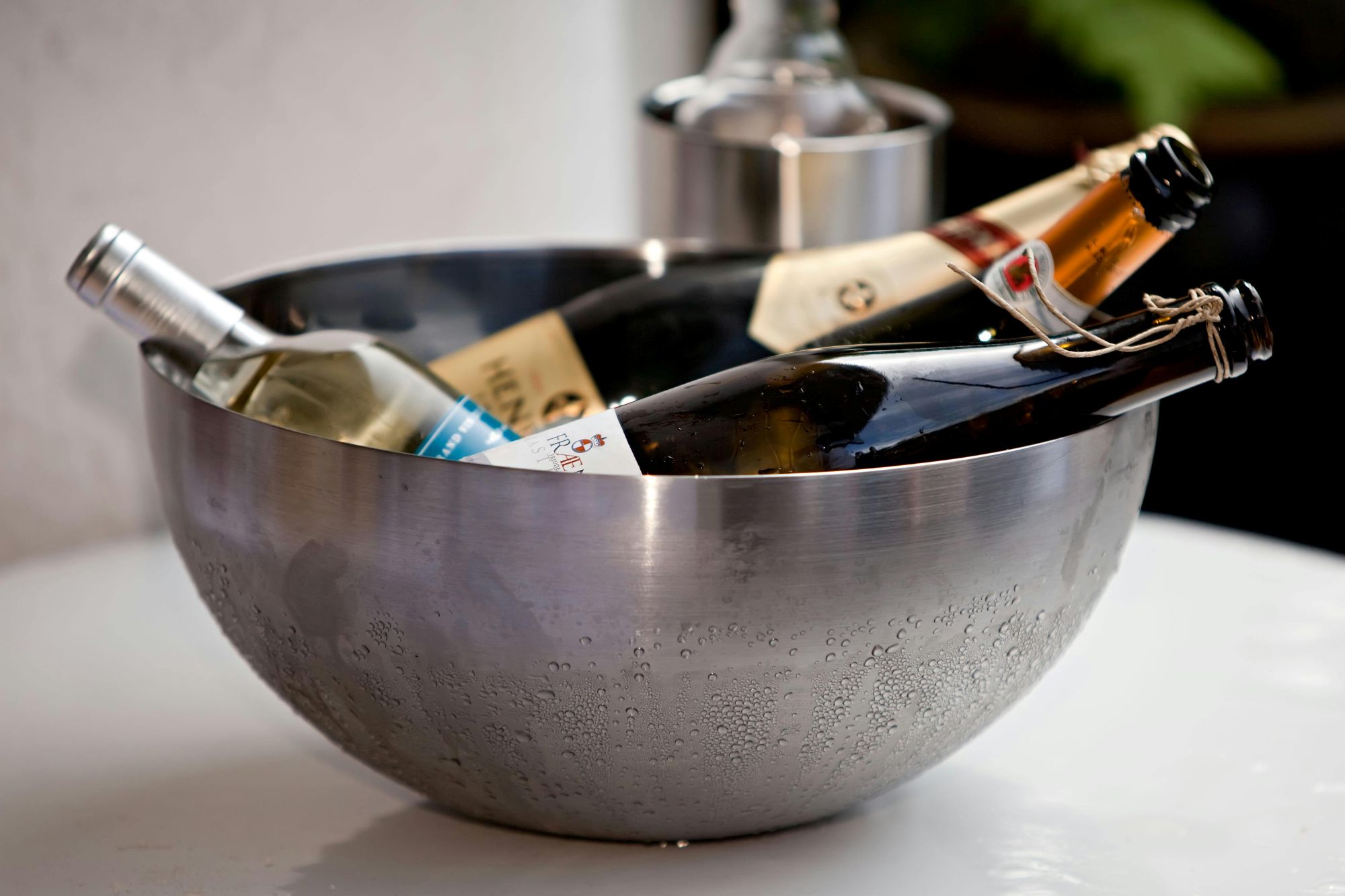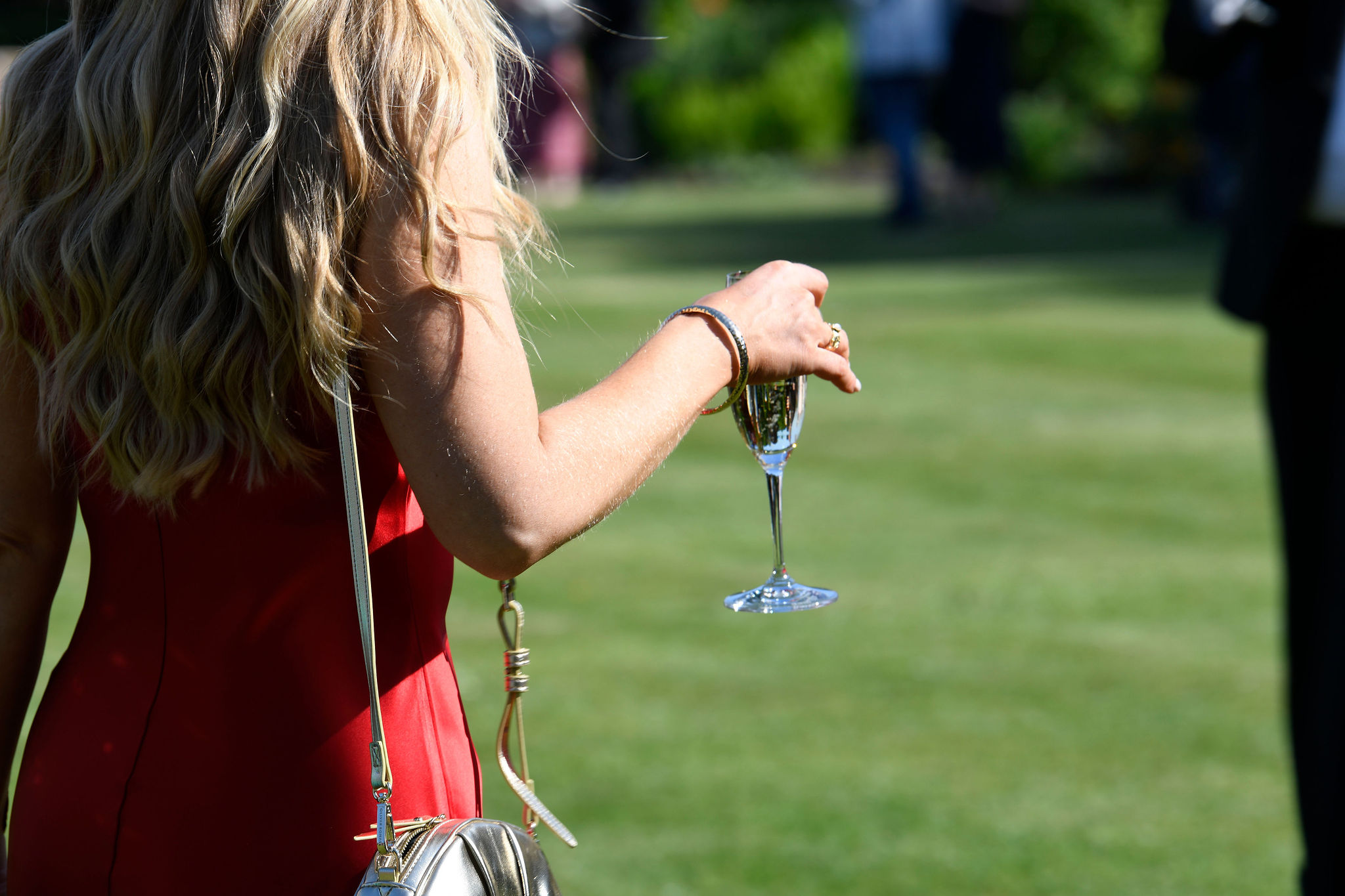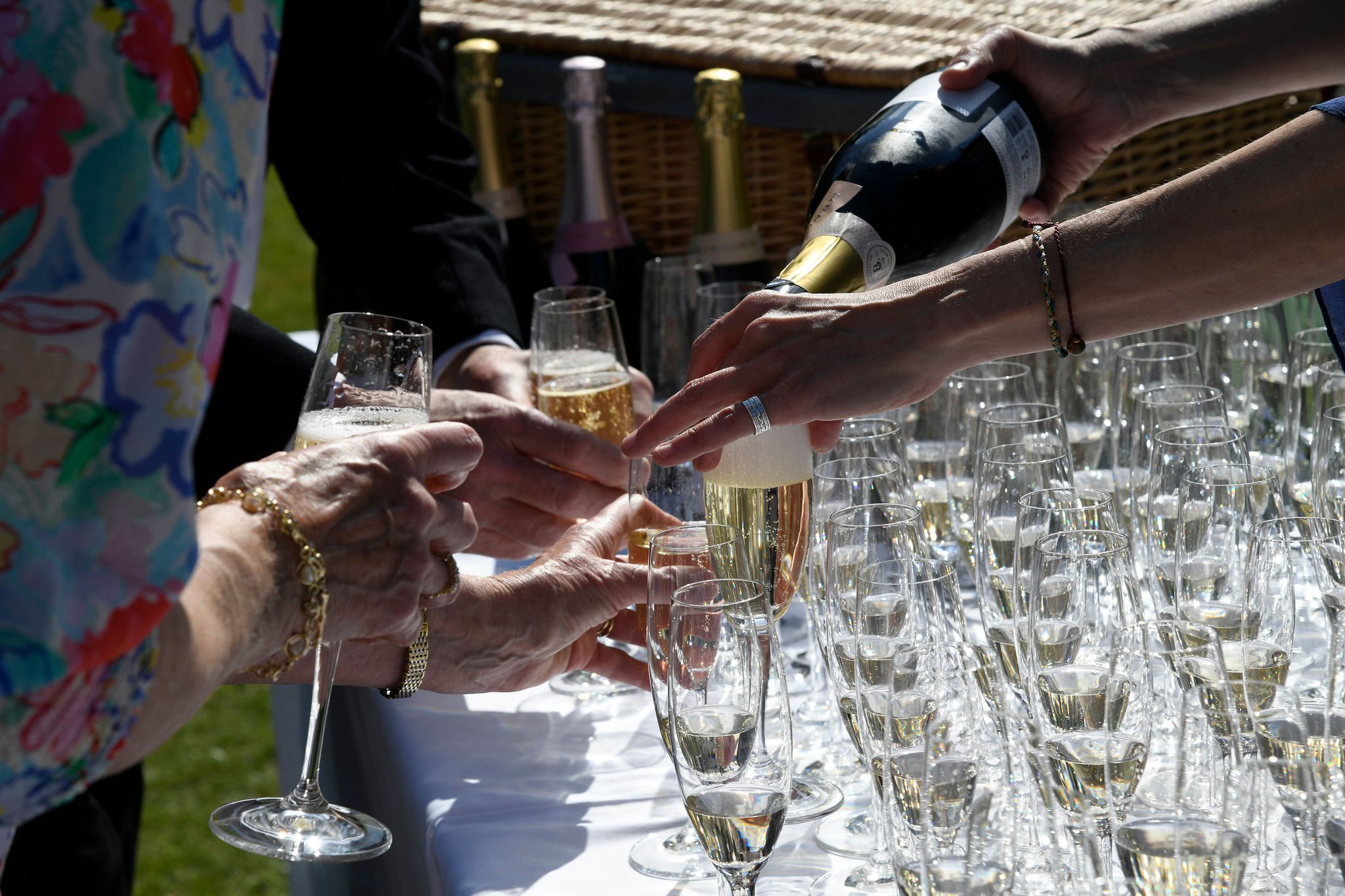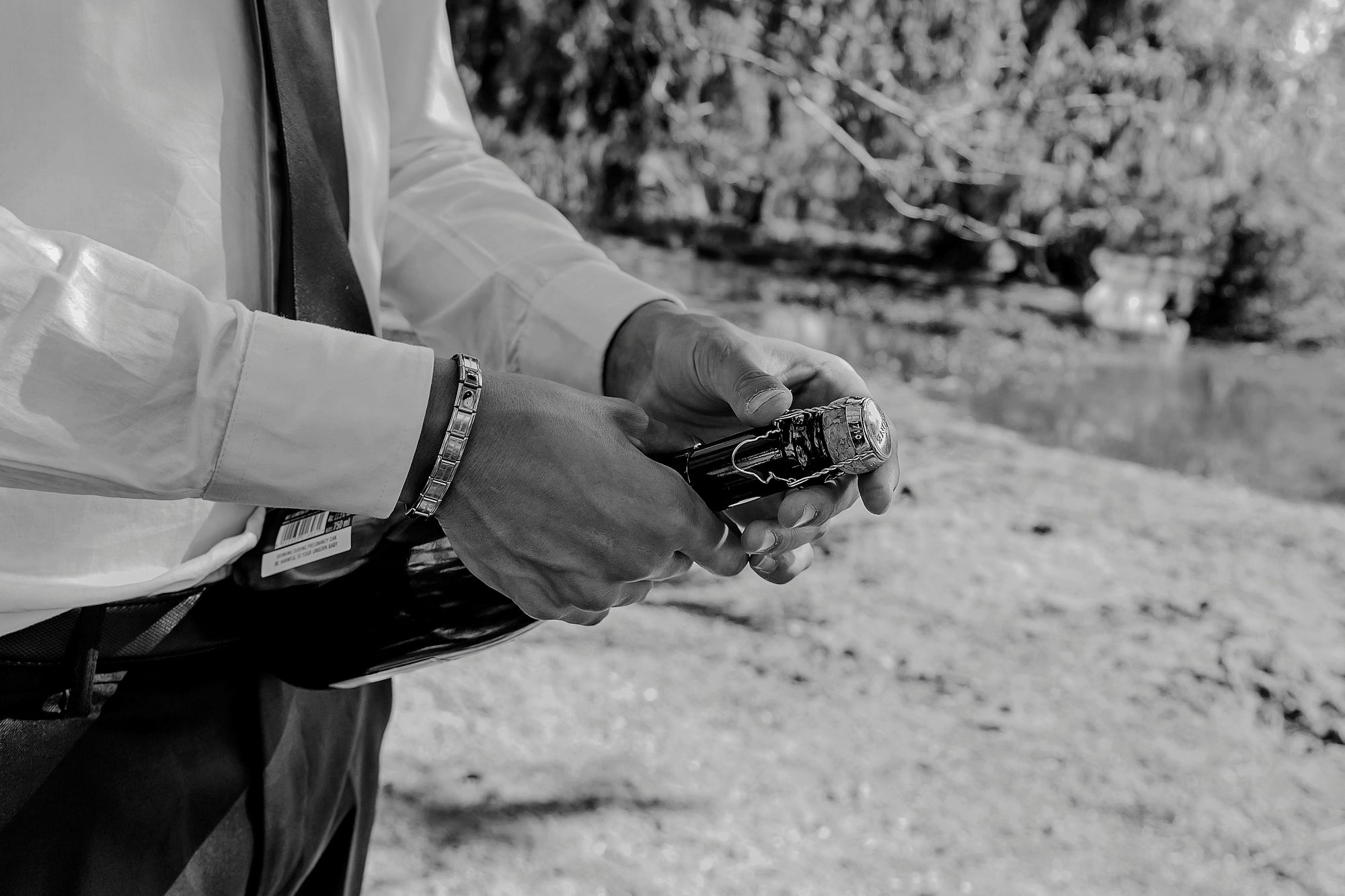Sparkling wine is the ultimate treat, and a fine bottle can last for years. But does sparkling wine go off? The answer to this depends on several factors, including the type of wine, manufacturing method, and storage conditions.
If you have just discovered you have a bottle of sparkling wine you didn’t know you had, or if you’re just curious about the longevity of sparkling wine, this guide is for you. You’ll learn how to tell if your sparkling wine has gone bad and what to do with a bottle once you’ve opened it.
Does Sparkling Wine Go Off?
Eventually, even sparkling wine loses its freshness. During its production, the mix of fermentation, alcohol, and acidity acts as a shield against spoilage, allowing it to remain enjoyable for much longer than many other drinks. But these natural preservatives aren’t everlasting. As the years go by, the wine’s structure gradually deteriorates, resulting in faded aromas, less bubbly fizz, and a more muted flavour profile.
How to Tell When a Sparkling Wine Has Gone Bad
Unlike still wine, sparkling wine gives clear signs when it’s past its best:
Loss of bubbles
If the wine has become flat or barely fizzy, CO₂ has escaped — typically due to ageing or poor storage conditions.
Aroma changes that smell “off”
Bad sparkling wine may smell:
- Musty (like a damp cupboard) — possible cork taint (TCA)
- Vinegary or sharp — oxidation or spoilage bacteria
- Cooked or stewed — heat damage (“maderised”)
Colour changes
White or rosé sparkling wines that turn deep yellow, amber, or brownish indicate oxidation.
Unpleasant flavours
Sparkling wine has likely deteriorated if it tastes:
- Sour and thin
- Metallic
- Bitter in an unnatural way
- Stale, with no freshness
Sediment that looks unusual
A small amount of tartrate crystal sediment is normal and very common in white and rosé sparkling wines. Tartrate crystal sediment is a natural, harmless byproduct of winemaking that appears as small, clear or white crystals in the bottle or at the bottom. But cloudiness, floating clumps, or ropey textures indicate microbial spoilage.
How Long Can Sparkling Wine Last?
The expiry process of sparkling wine depends on several factors, including acidity, sugar content, alcohol level, lees contact, and storage conditions:
Acidity
High acidity (low pH) is a natural preservative, and sparkling wines need higher acidity to maintain an adequate freshness. Low acidity means the wine is chemically unstable, which makes it go bad faster.
How low acidity causes faults:
- Wines oxidise much faster when the pH is high, turning yellow–brown, flat, stale, or with a bruised-apple flavour.
- Microbes grow more easily when the pH is higher.
Signs the wine went bad due to low acidity:
- Darker colour
- Flat bubbles
- Flabby taste with no freshness
- Cooked, bruised-apple, or stale aromas
In short, low acidity doesn’t ruin a wine immediately. It just removes its protection, meaning the wine declines or spoils more quickly.
Sugar Level
When the second fermentation of sparkling wine is complete and the yeast sediment has been removed, a winemaking step called disgorgement follows. At this stage, the winemaker adds a small amount of sugar, known as liqueur de dosage. Adding sugar not only establishes the wine’s sweetness level but also impacts how the flavours develop over time and affects microbial stability.
How sugar contributes to wine going bad:
- If sugar is not fully protected by acidity and sulphur dioxide, it becomes food for spoilage yeasts and bacteria.
- These microbes can create off-flavours (sour, vinegary, yoghurt-like), cloudiness, and refermentation in the bottle (causing unexpected fizz changes or gushing).
When sugar leads to faults:
- In wines with low acidity, added dosage sugar is more likely to trigger instability.
- Improper dosage or poor hygiene during disgorgement can introduce microbes that feed on the sugar.
Practical signs in the bottle:
- Cloudiness not from lees (the sediment left behind after fermentation)
- Fizz that seems stronger or weaker than normal
- Sour, lactic or vinegary aromas
- Slight sediment that shouldn’t be there
In short, sugar doesn’t usually make sparkling wine go bad on its own. But if microbes are present or acidity is too low, sugar accelerates spoilage.
Alcohol Level
Alcohol helps limit microbial growth, but sparkling wine has relatively low alcohol (10–12%), so it offers less protection than still wine.
How low or unbalanced alcohol causes faults:
- Wines with very low alcohol content can spoil more quickly because microbes are less inhibited.
- Wines that have had alcohol removed (e.g. through reverse osmosis) can be more fragile unless compensated with high acidity.
Signs linked to alcohol imbalance:
- Sourness or refermentation (microbial activity)
- Rapid flavour decline, especially in no- or low-alcohol sparkling wines
In short, alcohol isn’t a primary spoilage driver in sparkling wine. However, too little alcohol increases the risk.
Lees Contact
After sparkling wine’s first fermentation, the wine is often left to sit with the dead yeast cells. This is called ageing on the lees. Lees contact (time spent on dead yeast) actually makes sparkling wine more stable, not less.
How lees relate to things going bad:
- If the wine is not disgorged correctly (lees are not entirely removed), leftover yeast can sometimes cause cloudiness, slight refermentation, dirty or reductive aromas.
Signs linked to lees problems:
- Unexpected cloudiness in a wine that should be clear
- Sulphury, rubbery, onion, or “struck match” smells
In short, lees themselves don’t make wine go bad, but poor handling of lees does.
Microbial Activity
This is one of the most direct causes of a sparkling wine going bad.
How microbes cause faults:
- Lactic acid bacteria can create buttery, cheesy, yoghurt-like or sour-milk aromas
- Brettanomyces yeast can create barnyard, medicinal or smoky smells
- Acetobacter bacteria can cause vinegar aromas (volatile acidity)
Signs the wine has microbial spoilage:
- Cloudiness
- Gushing when opened
- Sharp vinegar smell
- Cheesy, yoghurt-like aromatics
Storage
Most sparkling wine faults originate from poor storage, rather than poor winemaking. It’s the number one reason that sparkling wine goes off.
How bad storage causes spoilage:
- Heat above 20°C (68°F) accelerates chemical reactions in sparkling wine (causing oxidation), which produces cooked flavours.
- Very high heat (30°C / 86°F and above) can “cook” the wine, making it taste stewed or burnt.
- Fluctuating temperatures (hot–cold cycles) are even worse than constant warmth. They stress the wine and speed up spoilage.
- Light exposure can trigger “light-strike,” producing a wet wool or rubber-like smell, especially in clear or green bottles.
- Dry air dries out corks, allowing gas to escape and leading to flat wine.
Signs the wine is spoiled due to storage:
- Flat or nearly flat bubbles
- Deep yellow or brown colour
- Burnt sugar, bruised apple or sherry-like notes (oxidation)
- Wet wool or rubber smell (light strike)
Healthy Ageing Flavours vs Spoilage Flavours
Not all changes in sparkling wine are bad. Some flavours, like subtle bready, toasty, or gentle caramel notes, and even a slight deepening of colour from pale yellow to light gold, can develop naturally as the wine ages and are signs of healthy maturation. Other changes, such as strong burnt, sour, or rubbery aromas, or dark brown and amber colours, usually indicate the wine has gone off due to poor storage or winemaking faults.
The table below helps you tell the difference between flavours and colour changes that show a sparkling wine is ageing well and those that suggest it may have spoiled.
| Aspect | Healthy Ageing Flavours | Spoilage / Gone-Off Flavours | Likely Cause |
|---|---|---|---|
| Bubbles / Effervescence | Lively, persistent, fine mousse | Flat or weak bubbles | Poor storage, cork issues, low CO₂ |
| Colour | Pale yellow, light gold, delicate rosé | Deep yellow, amber, or brown | Oxidation, heat damage |
| Aroma / Smell | Fresh fruit, floral, bready, toasty, creamy | Vinegar, sour, wet wool, rubber, cooked, stewed, medicinal | Microbial contamination, light-strike, heat, oxidation |
| Caramel / Toasty Notes | Subtle, bready, biscuit-like, adds complexity | Burnt, excessive caramel, acrid | Excessive oxidation or overcooking |
| Flavour | Balanced acidity, smooth, creamy, fresh | Sour, metallic, bitter, flat, off | Microbial spoilage, oxidation, poor storage |
Summary
Yes, sparkling wine can go off. But with good acidity, proper sugar dosage, careful lees handling, correct storage, and moderate alcohol, it can age beautifully for several years. Key warning signs include:
- Flat bubbles or loss of effervescence
- Dark yellow, amber, or brownish colour
- Vinegary, sour, cooked, rubbery, or wet wool aromas
- Cloudiness or unusual sediment
- Off flavours such as metallic, bitter, or thin
Proper storage (cool, dark, consistent temperature) and careful handling will maximise the life of your sparkling wine. Even if it shows some healthy ageing notes like subtle bready or toasty aromas, it may still be perfectly enjoyable. But if it shows any of the spoilage signs above, it’s best to avoid drinking it.



